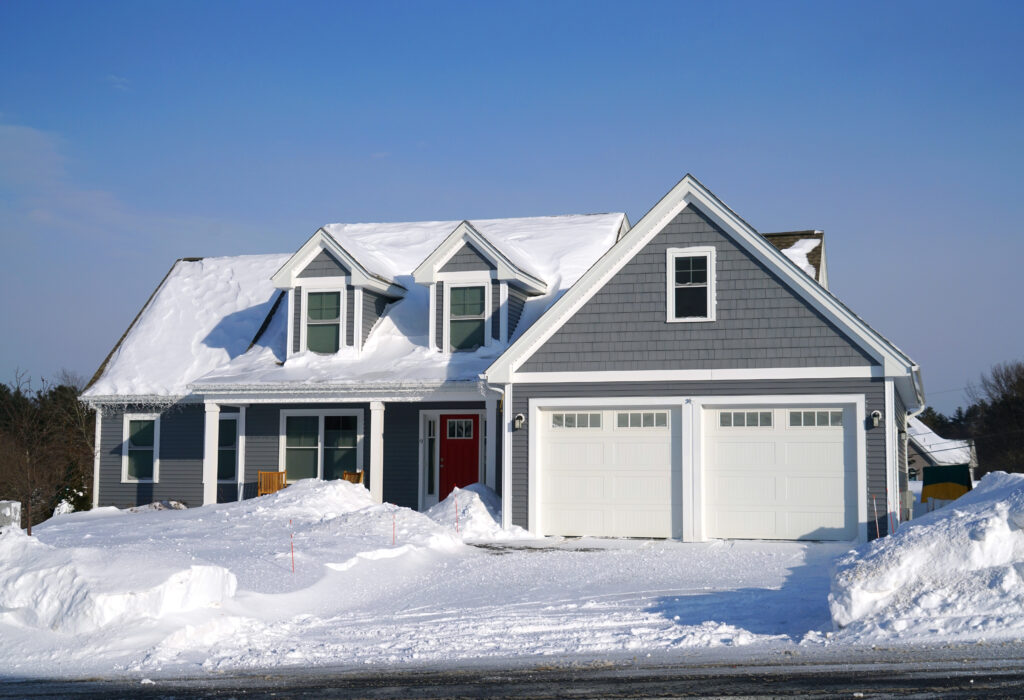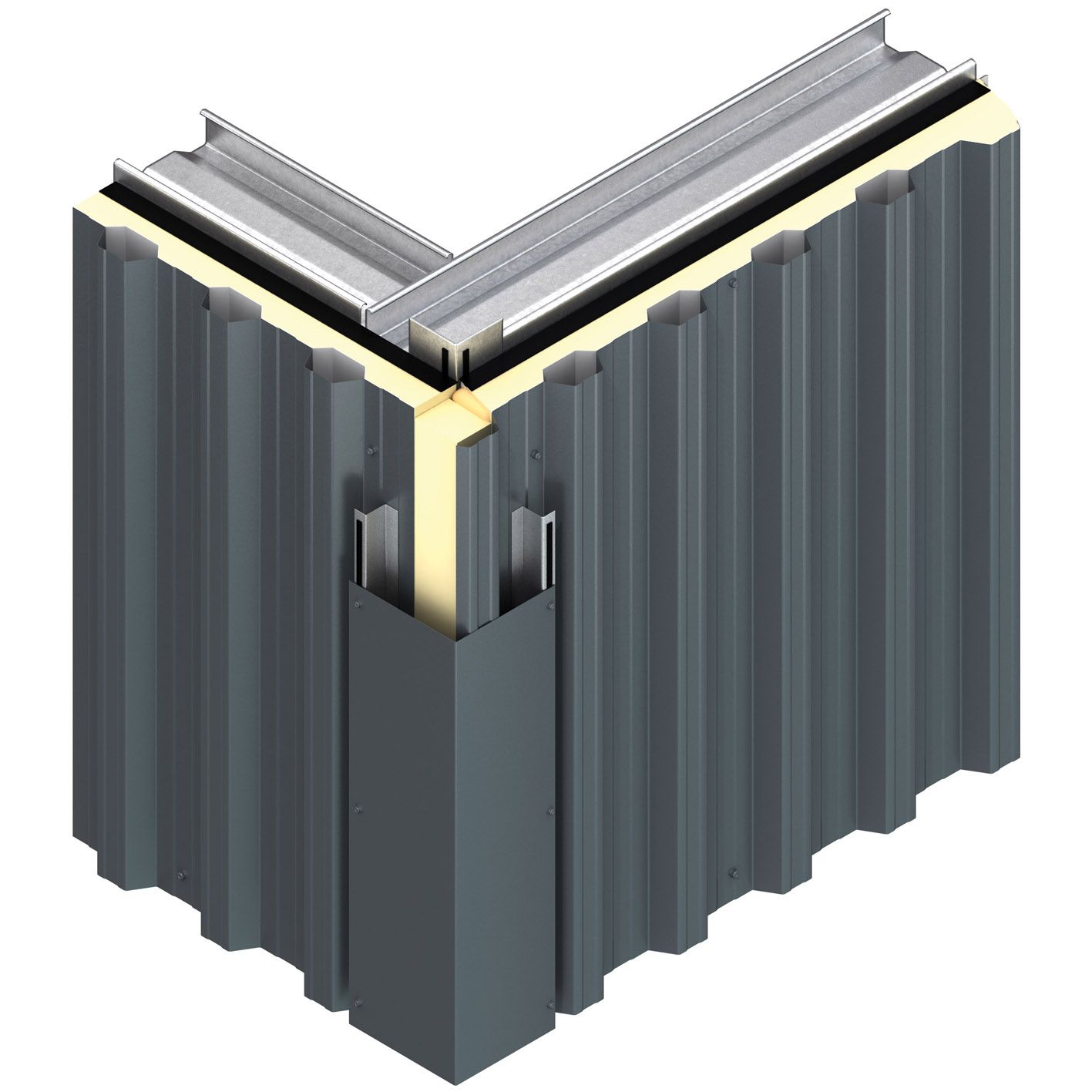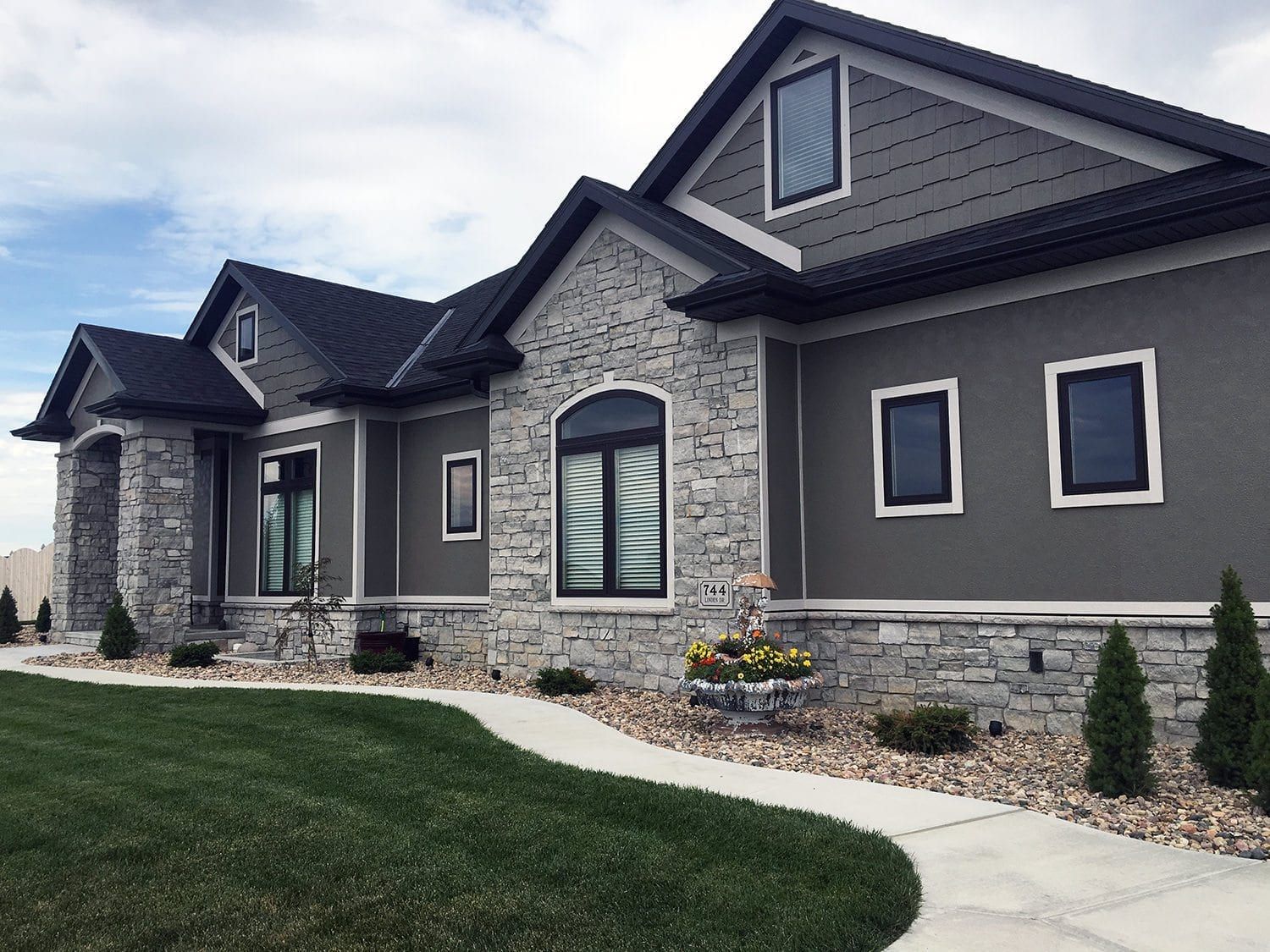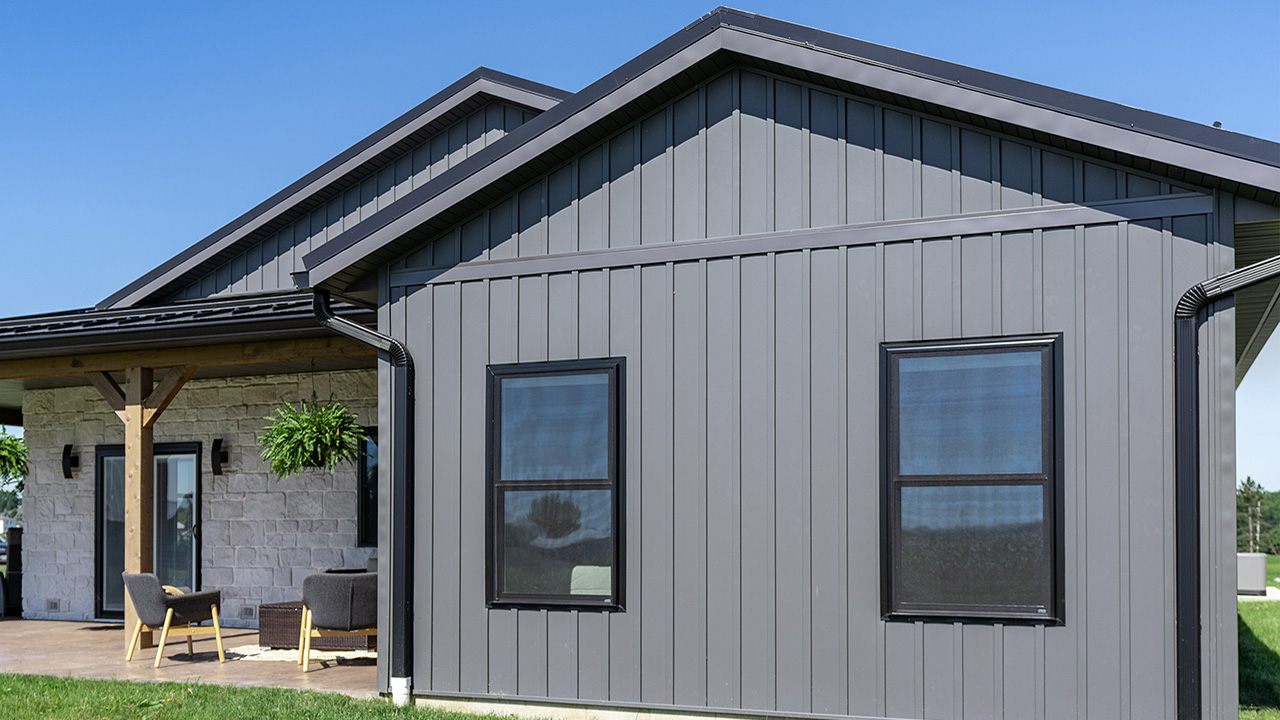Is Insulated Siding Worth It?

Is insulated siding worth it? That’s a question many homeowners grapple with, balancing upfront costs against long-term energy savings and aesthetic improvements. This exploration delves into the financial aspects, energy efficiency gains, durability, and visual impact of insulated siding, helping you make an informed decision for your home.
Ultimately, the value of insulated siding depends on individual circumstances, including climate, existing home insulation, and personal preferences. We’ll examine the various factors to help you weigh the pros and cons and determine if this investment aligns with your needs and budget.
Cost Analysis of Insulated Siding
Choosing the right siding for your home involves careful consideration of both upfront and long-term costs. Insulated siding presents a different cost profile compared to traditional options, demanding a thorough analysis to understand its true value.
Upfront Costs of Insulated Siding vs. Traditional Siding
The initial investment in insulated siding is generally higher than that of traditional siding. This difference stems from the added insulation layer and the specialized installation process. The following table provides a comparative cost breakdown, keeping in mind that these figures are estimates and can vary greatly based on factors such as house size, siding material choice, labor rates in your region, and project complexity.
| Siding Type | Material Cost | Labor Cost | Total Cost (Estimate) |
|---|---|---|---|
| Traditional Vinyl Siding | $5,000 – $10,000 | $3,000 – $6,000 | $8,000 – $16,000 |
| Insulated Vinyl Siding | $8,000 – $15,000 | $4,000 – $8,000 | $12,000 – $23,000 |
| Traditional Wood Siding | $10,000 – $20,000 | $5,000 – $10,000 | $15,000 – $30,000 |
| Insulated Fiber Cement Siding | $15,000 – $30,000 | $7,000 – $14,000 | $22,000 – $44,000 |
Note: These are broad estimates. Actual costs will depend on many variables.
Long-Term Cost Savings with Insulated Siding
The higher initial cost of insulated siding is often offset by significant long-term savings, primarily through reduced energy bills. The insulation layer acts as a barrier, minimizing heat transfer in both summer and winter.
The potential energy savings over a 10-year period can be substantial. Consider these examples:
- A homeowner in a climate with significant temperature swings might save $500-$1000 annually on heating and cooling costs.
- Over ten years, this translates to $5,000 – $10,000 in savings, potentially exceeding the initial cost difference between insulated and non-insulated siding.
- This savings is further amplified in homes with poor insulation, where the impact of insulated siding is most pronounced.
Additional Costs Associated with Insulated Siding Installation
While energy savings are a significant benefit, it’s important to acknowledge potential additional costs. These might include:
- Repairs and replacements: Like any exterior material, insulated siding can be damaged by severe weather or accidents. Repairs or replacements might be necessary over time, although the durability of certain insulated siding types can minimize this.
- Unexpected issues during installation: Unforeseen problems like rotted wood under the existing siding could add to the overall project cost.
- Specialized labor: The installation of insulated siding often requires skilled labor, which can command a higher hourly rate than traditional siding installation.
Energy Efficiency and Insulation Value
Insulated siding offers a unique approach to improving your home’s energy efficiency. Unlike traditional siding that only provides a weather barrier, insulated siding combines an outer protective layer with a built-in insulation core, creating a more efficient thermal envelope for your house. This directly impacts your energy bills and overall comfort.
The R-value of insulated siding is a crucial indicator of its thermal resistance. A higher R-value signifies better insulation; it means less heat escapes in winter and less heat enters in summer. This translates to lower energy consumption for heating and cooling, leading to significant savings on your utility bills. For example, a home with R-15 insulated siding might see a 15-20% reduction in heating and cooling costs compared to a home with traditional siding, depending on climate and other factors. The exact savings will vary based on factors such as climate, home size, and existing insulation.
Insulated Siding R-Value and Energy Savings
The R-value of insulated siding typically ranges from R-5 to R-8, although some higher-performance options exist. This built-in insulation reduces the amount of energy needed to maintain a comfortable indoor temperature. A higher R-value means less heat transfer through the walls, resulting in less strain on your HVAC system and consequently lower energy bills. For instance, a home in a colder climate with R-8 insulated siding will require less energy to heat the house compared to a home with traditional siding, potentially saving hundreds of dollars annually.
Comparison of Insulation Methods
The following table compares the energy efficiency of insulated siding with other common home insulation methods. It’s important to note that costs and R-values can vary depending on materials, installation, and regional factors.
| Insulation Method | R-Value (per inch) | Cost per Square Foot (Estimate) | Effectiveness |
|---|---|---|---|
| Insulated Siding | 5-8 (depending on thickness and material) | $3-$7 | Good for exterior walls; improves both thermal and moisture barriers. |
| Fiberglass Batt Insulation | 3.1-3.8 (per inch) | $0.50-$1.50 | Excellent for wall cavities; requires wall opening. |
| Spray Foam Insulation | 6.0-7.0 (per inch) | $1.00-$3.00 | Excellent air sealing; can be costly and requires specialized application. |
| Rigid Foam Board Insulation | 4-8 (per inch, depending on type) | $0.50-$2.00 | Good for exterior wall sheathing; requires additional exterior cladding. |
Improved Indoor Comfort
Insulated siding contributes significantly to improved indoor comfort by minimizing temperature fluctuations. In the summer, it helps keep the interior cooler by reducing heat transfer from the outside, leading to a more comfortable living environment and reduced reliance on air conditioning. In winter, it prevents heat loss, maintaining a warmer and more consistent indoor temperature, thus reducing the burden on your heating system. For example, a family might notice a significant reduction in drafts and cold spots near exterior walls after installing insulated siding, creating a more even and comfortable indoor climate.
Durability and Maintenance
Insulated siding, like any exterior material, offers a balance of benefits and drawbacks regarding its lifespan and upkeep. Understanding these aspects is crucial for making an informed decision about whether it’s the right choice for your home. This section will compare its longevity and maintenance needs to other common siding options and explore potential issues.
Insulated siding generally boasts a longer lifespan than vinyl or aluminum siding, often lasting 30-50 years or more with proper care. However, its durability is affected by factors like the quality of materials used, the installation process, and the severity of the local climate. Harsh weather, including extreme temperature fluctuations, heavy snowfall, and intense sun exposure, can accelerate wear and tear on any siding, but insulated siding’s composite nature can make it more resilient to some forms of damage than its less robust counterparts. For example, wood siding might be susceptible to rot and insect infestation, while vinyl siding can crack or fade under prolonged sun exposure. High-quality insulated siding, correctly installed, is less likely to suffer these issues.
Insulated Siding Lifespan Compared to Other Materials
A direct comparison reveals that insulated siding often outperforms vinyl and aluminum in longevity. Vinyl siding typically lasts 20-30 years, while aluminum siding, though durable, can be prone to dents and scratches, impacting its aesthetic appeal over time. Wood siding, while aesthetically pleasing, requires significantly more maintenance and has a shorter lifespan (15-30 years) unless meticulously cared for. The composite nature of insulated siding provides better protection against moisture and temperature extremes, extending its useful life. However, the specific lifespan depends greatly on the chosen material and its quality. A poorly manufactured or improperly installed system will show premature wear, regardless of the material.
Insulated Siding Maintenance Requirements
While insulated siding requires less maintenance than wood, regular cleaning and occasional inspections are essential to maintain its appearance and longevity. Neglecting these tasks can lead to problems that could have been easily prevented.
Typical maintenance involves annual cleaning using a soft brush, mild detergent, and water. Power washing should be avoided as it can damage the siding’s surface. Inspecting the siding for loose panels, cracks, or damage from impact is also recommended at least once a year. Addressing any issues promptly prevents small problems from escalating into costly repairs. For instance, a small crack left unaddressed might allow moisture to penetrate, leading to potential structural damage. Regular inspection, therefore, is a crucial element of responsible homeownership.
Potential Issues and Solutions
Despite its durability, insulated siding can experience some problems over time. These issues are often preventable with proper maintenance and careful installation. One common issue is the potential for water damage if the installation is flawed, allowing moisture to penetrate behind the siding. This can lead to mold growth or damage to the underlying structure. Addressing water intrusion requires identifying the source of the leak (often faulty flashing or sealant) and repairing it promptly. Another potential problem is the discoloration of the siding due to prolonged sun exposure. While insulated siding is more resistant to fading than some materials, it is not entirely immune. Regular cleaning and the application of appropriate protective coatings can help mitigate this. Finally, impacts from falling debris or other accidents can cause damage, which might require panel replacement. Such repairs are best left to professionals to ensure proper installation and avoid further damage.
Aesthetic Considerations and Home Value
Insulated siding offers more than just energy efficiency; it significantly impacts a home’s curb appeal and overall value. The variety of styles, colors, and textures available allows homeowners to enhance their home’s aesthetic appeal while enjoying the benefits of superior insulation.
Insulated siding’s visual impact on a home’s exterior is substantial. The clean lines and smooth surfaces of many insulated siding options can create a modern and sophisticated look, while other styles mimic the appearance of traditional materials like wood or brick, offering a timeless charm. This versatility allows it to complement various architectural styles, increasing a home’s attractiveness and market value.
Variety of Styles and Colors
The availability of numerous styles and colors allows for a high degree of customization. Imagine a Victorian-style home beautifully enhanced with insulated siding that replicates the rich texture of aged wood, painted in a deep, inviting green. Or consider a contemporary ranch-style house modernized by sleek, gray insulated siding with crisp, clean lines. The range of colors extends from subtle neutrals to vibrant hues, allowing homeowners to express their personal style and create a unique visual identity for their homes. For instance, a warm beige siding can create a welcoming feel, while a bold navy blue can create a striking statement.
Complementary Architectural Styles
Insulated siding’s adaptability makes it suitable for various architectural styles. A craftsman-style home could be enhanced with insulated siding that mimics the look of natural wood shingles, preserving its historical charm while adding modern energy efficiency. A farmhouse could benefit from the rustic appeal of insulated siding designed to resemble weathered barn wood, creating a cozy and inviting ambiance. Conversely, a modern minimalist home would be perfectly complemented by sleek, smooth-surfaced insulated siding in a neutral tone. The visual impact is a harmonious blend of style and functionality, maximizing the home’s aesthetic potential.
Impact on Home Value and Resale Price
Investing in insulated siding can yield a significant return on investment, not just in energy savings but also in increased home value. Potential buyers are increasingly drawn to energy-efficient homes, and insulated siding is a clear indicator of such improvements. A recent appraisal of a home in a similar neighborhood that underwent siding replacement, showcasing an upgrade to insulated vinyl siding, showed a 5-7% increase in market value compared to similar homes without the upgrade. This improvement in perceived value directly translates to a higher resale price, making insulated siding a worthwhile investment for both current and future homeowners. The improved curb appeal and energy efficiency are highly attractive features for potential buyers, leading to a faster sale and a potentially higher selling price.
Environmental Impact
Choosing building materials carries an environmental footprint. Insulated siding, while offering many benefits, has its own impact that needs careful consideration. Understanding this impact allows for informed decisions, balancing the advantages with the potential environmental consequences.
Insulated siding contributes to a smaller carbon footprint primarily through its energy efficiency. By reducing the amount of energy needed to heat and cool a home, it lessens reliance on fossil fuels, a major source of greenhouse gas emissions. This translates to fewer emissions released into the atmosphere, mitigating the effects of climate change. A well-insulated home can significantly reduce a household’s energy consumption, contributing to a healthier planet.
Comparison with Other Siding Materials
The environmental impact of insulated siding is best understood by comparing it to alternatives. Manufacturing processes, the materials themselves, and end-of-life disposal all contribute to the overall environmental cost.
- Vinyl Siding: Vinyl siding manufacturing is energy-intensive and often relies on non-renewable resources. Disposal can be problematic, as vinyl doesn’t readily biodegrade. Insulated siding, while also using some non-renewable resources, offers better long-term energy savings, potentially offsetting some of its initial environmental impact.
- Wood Siding: While wood is a renewable resource, its harvesting and processing can contribute to deforestation and habitat loss. The treatment of wood siding with preservatives also raises environmental concerns. Insulated siding can offer a more sustainable alternative if its manufacturing processes prioritize recycled content and energy efficiency.
- Fiber Cement Siding: Fiber cement siding typically has a lower embodied carbon footprint than vinyl, but its manufacturing still involves energy consumption and the use of cement, which has its own environmental consequences. Insulated siding, with its integrated insulation, can potentially offer superior long-term energy performance compared to fiber cement.
Sustainability Aspects of Insulated Siding
The sustainability of insulated siding hinges on responsible manufacturing practices and the use of environmentally friendly materials. Several factors contribute to a more sustainable approach:
- Recycled Content: Some manufacturers incorporate recycled materials into the production of insulated siding, reducing reliance on virgin resources and minimizing waste. For example, some insulated siding products utilize recycled plastics in their composition.
- Energy-Efficient Manufacturing: Manufacturers committed to sustainability employ energy-efficient processes in their production facilities, lowering the overall carbon footprint of the product. This can involve using renewable energy sources or implementing energy-saving technologies in the manufacturing process.
- Durability and Longevity: The long lifespan of insulated siding reduces the need for frequent replacements, minimizing the environmental impact associated with manufacturing and disposal over time. A durable product reduces the need for repeated production and disposal cycles.
Final Review
Investing in insulated siding is a significant decision impacting both your home’s comfort and its value. While the initial cost might seem higher than traditional siding, the long-term energy savings, improved durability, and enhanced curb appeal often make it a worthwhile investment. By carefully considering your individual needs and the factors discussed, you can confidently decide if insulated siding is the right choice for your home.




